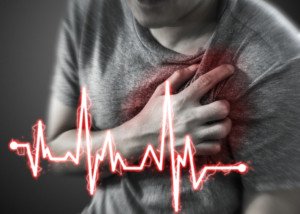Ever wonder how a short, eight-second EKG could tell a doctor about someone’s heart?
Lance S. Burns, MD, emergency medicine specialist, of Legacy ER & Urgent Care, Frisco East location, performs many EKGs in the ER as part of his profession.
I asked him why EKGs are so short and how they can provide enough information to doctors.
After all, if a person has an abnormal heart rhythm, there may still be long periods of time in between abnormal beats.
What are the odds that the abnormality will show during the eight seconds that the EKG is being taken?
Cardiologists and ER physicians are the two types of specialists who commonly administer the EKG.
Dr. Burns explains, “EKGs are not typically looking for arrhythmias. Therefore, unlike the longer rhythm strips or event monitors, the EKG need only be long enough to capture only several heart complexes.
“The EKG is looking at the electrical flow through heart muscle. If this is abnormal, it will be apparent in any one heartbeat.”
What can cause an abnormal electrical flow through heart muscle?
Blockage in a coronary artery is one possible cause, though an EKG is not used for the definitive diagnosis of coronary artery disease.
The gold standard of diagnosis for the so-called clogged arteries or blockages is the catheter angiogram, though other tests such as a cardiac stress test can indicate the presence of blockages.
Dr. Burns continues, “If the concern is trying to detect arrhythmias, then a much longer period of analysis (often days) will be needed.
“Certain arrhythmias, such as atrial or ventricular fibrillation, occur continuously and will be captured on an EKG, even with the short period of analysis.”
If a longer period of monitoring is needed, the patient can undergo a non-invasive placement just under the skin of an event monitor.
 Dr. Burns has over 30 years of experience, and he specializes in emergency medicine as well as family medicine. For more info: Legacy ER & Urgent Care.
Dr. Burns has over 30 years of experience, and he specializes in emergency medicine as well as family medicine. For more info: Legacy ER & Urgent Care.
 Lorra Garrick has been covering medical, fitness and cybersecurity topics for many years, having written thousands of articles for print magazines and websites, including as a ghostwriter. She’s also a former ACE-certified personal trainer.
Lorra Garrick has been covering medical, fitness and cybersecurity topics for many years, having written thousands of articles for print magazines and websites, including as a ghostwriter. She’s also a former ACE-certified personal trainer.
.



























